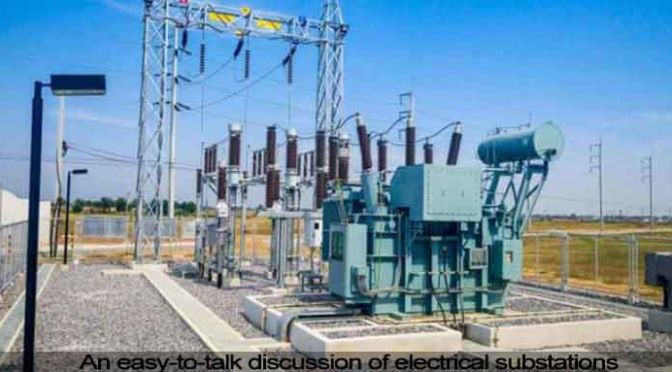An electrical substation is a part of electrical generation, transmission and distribution systems. Substation allows voltage from high to low or low to high and other important functions.
Substations are built between the power plant and the customer. Where the power is transmitted through multiple feeders with the help of different electrical appliances and converted to different quality voltages using a transformer. It also helps to change the power factor, frequency, AC to DC with substations.
Table of Contents
The most important things to keep in mind when designing an electrical substation:
- First, you have to choose a good place.
- To ensure its safety – good maintenance of maintenance, change of any parts problem, regular inspection and testing according to standards, safe and relevant issues from fire problem.
- It should be easily managed and maintained and the minimum cost should be monitored.
Types of substations
Substations can be divided into several sections, here we will look at the types depending on two things:
- On the service
- The structural features are on it.
1. On the service
Here the work is mainly done on voltage level low (step up-down), power factor upgrades, AC power to DC power conversion.
- To lower the transformer substation voltage.
- Switching Substation line keys for switching.
- Power Factor Correction Substation to Improve Power Factor.
- Converting substations from AC to DC.
- Industrial Substation: To supply power to different industries.
- Frequency substation
2. The structural features are on it
- Indoor Substation: All appliances and equipment used in the substation if any shed or buildings placed within, but is called an indoor substation. Its voltage is the highest 11 KV.
- Outdoor Substation: If all the equipment and equipment used in the substation is placed in an open space, it is called an outdoor substation. These are the basics 66 Stayed on KB.
- Underground Substation: This substation is done underground in a crowded area.
- Paul-Mounted Substation: This is a type of outdoor substation above; H-Pole Or 4-Pole Is placed in between.
The above transformer substations can be further subdivided into:
- Step up sub-station
- Primary Sub-Station
- Secondary sub-station
- Distribution Sub-Station
Substation equipment view:
Generating Station – >> Sub-Station – >> Distribution

- Primary power lines’ side
- Secondary power lines’ side
Primary Power lines side
- Primary power lines
- Ground wire
- Overhead lines
- Lightning arrester
- Disconnect switch
- Circuit breaker
- Current transformer
- Transformer for measurement of electric voltage
- Main transformer
- Control building
- Security fence
- Secondary Power line
The material that is required to construct the sub-station is divided for convenience:
Incoming circuit
- Lightning Arrestor.
- Overhead earth wire.
- Isolator
- Fuses
- Earthling Switch etc
- Incoming Lines (Underground & Overhead)
High Voltage Switchgear Panel: (HT)
- Bus bars
- Isolators
- Circuit breaker
- C.T
- P.T
- Metering system
- Indicating instruments
- Various protective relays
Low Voltage Switchgear Panel: (LT)- Bus bars
- Isolators
- Fuses
- Magnetic contractors
- Air-break switch
- Various types of no-fuse breaker
- Metering system
- Indicating instruments
- Various protective relays etc
- PFI capacitors
It takes some more common components
- Transformers.
- The battery bank and charging system.
- Outgoing line.
- Emergency power supply system.
- It also takes some more components depending on the type of sub-station.
Reference


